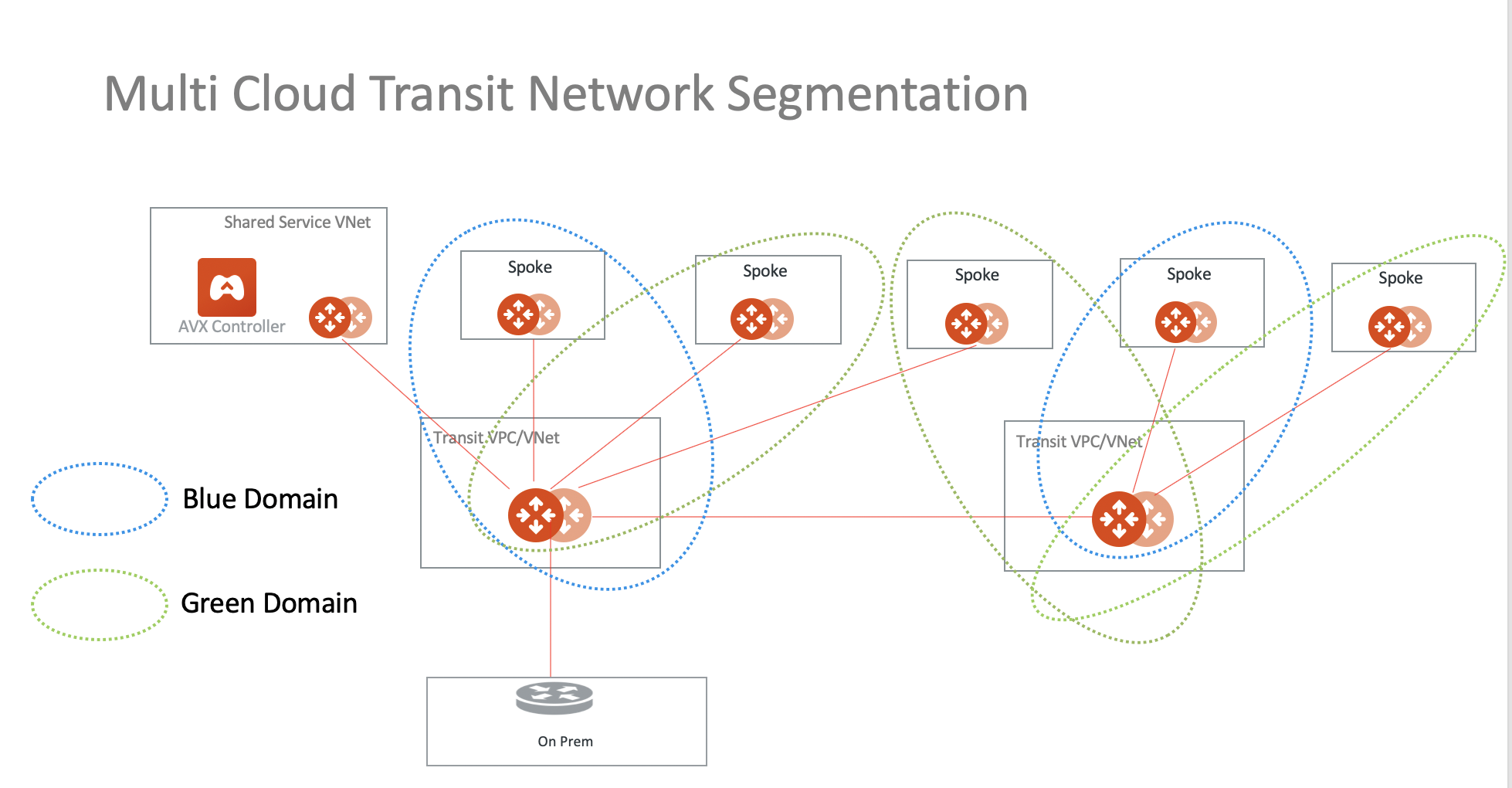About Transit Network Segmentation Overview
What is Multicloud Transit Segmentation?
Aviatrix Multicloud Transit Segmentation provides network isolation through network domains and connection policies to Aviatrix Transit network where both Spoke and Transit networks deploy Aviatrix Gateways across multi-region and multicloud.
The concept is described in the below diagram.

Where Spokes associated with the blue domain can communicate with each other while Spokes associated with the green domain can communicate with each other. But there is no cross communication between blue domain and green domain unless there is connection policy. The concept is the same as Network Domains and Connection Policies defined in TGW Orchestrator, except this is implemented with Aviatrix Transit where both Spokes and Transit VPC/VNet deploy Aviatrix gateways. (Note the segmentation works with Azure native Spoke VNets.)
What is a Network Domain in Multicloud Transit?
A Network Domain is an Aviatrix enforced network of VPC/VNet members, where VPC/VNets in the Network Domain can communicate with each other, and VPC/VNets not in the network domain cannot communicate with VPC/VNets in the Network Domain.
One or more Spoke VPC/VNets are members in a network domain.
Spokes in a network domain can communicate with each other via an Aviatrix Transit Gateway.
The Aviatrix Controller dynamically programs and updates both VPC/VNet route tables so that instances in different Spoke VPC/VNets in the same domain can communicate with each other.
Two network domains are not connected, i.e., a Spoke in one domain has no connectivity to another Spoke in a different domain. Connection policy must be specified to connect the two domains so that Spokes in each domain can communicate with each other.
The Network Domain also applies to the hybrid connection from Aviatrix Transit Gateway to on-prem or remote sites. Each BGP peer or connection can be associated with one Network Domain.
What is a Connection Policy?
A connection policy is a rule enforced by Aviatrix for cross Network Domain connectivity.
What are the benefits of using Network Domains and Connection Policies?
The key use case for building Network Domains is to segment traffic for enhanced security posture.
Using Network Domains and Connection Policies allow you to identify groups of Spokes and Edges with the same requirements from a networking point of view and then apply connection policies at the group level. This avoids having to individually specify connections at the Spoke level. The Aviatrix Controller takes care of route programming of all route tables.
Can an Aviatrix Transit Network Domain work with TGW Orchestrator Network Domain?
They do not work together at this time, however we have plan to integrate them in the future.
How do I set up Multicloud Transit Segmentation?
Follow the Transit Segmentation Workflow.
How many Network Domains are supported in Multicloud Transit Segmentation?
The maximum number of Network Domains on each Aviatrix Transit Gateway is 200.
What is the difference in implementation of Segmentation between Release 6.1 and Release 6.0?
In Release 6.1 and later, each Network Domain is implemented as an individual route table on the Aviatrix Transit Gateway. This allows better handling for the default route (0.0.0.0/0) traffic if different domains require different egress next hop. In addition, duplicate Spoke CIDRs attached to different Aviatrix Transit Gateways can co-exist if they belong to different domains.
What is the limitation of Segmentation?
-
Duplicated CIDRs that cross domains or cross transits may not work all the time. Aviatrix does not support duplicated CIDRs that cross domains or cross transits.
-
Overlapping CIDRs advertised from on-prem to different Spoke network domains connected to one Aviatrix Transit Gateway is not supported.